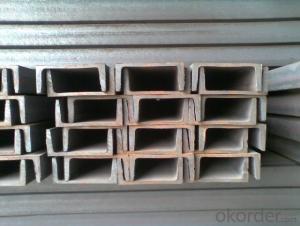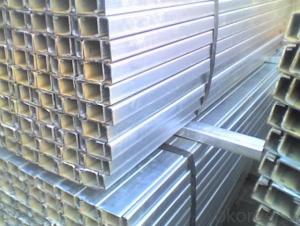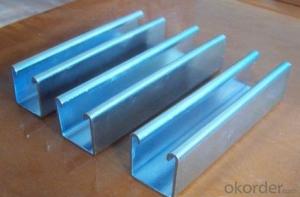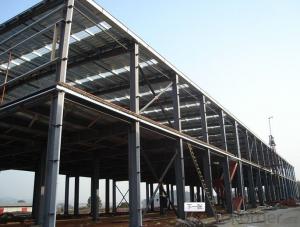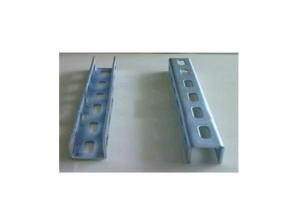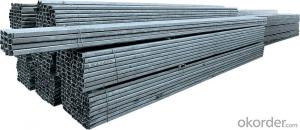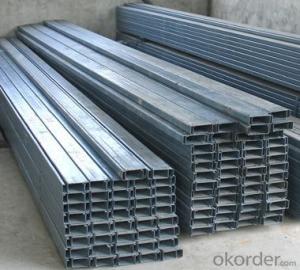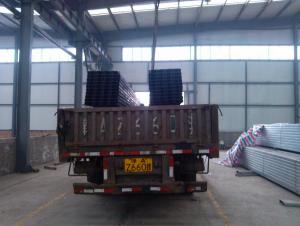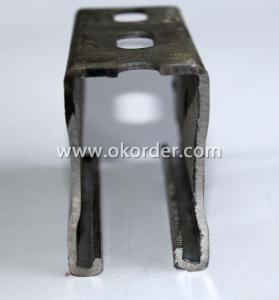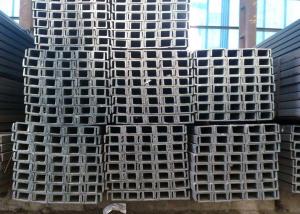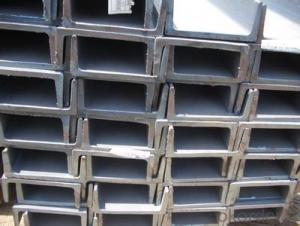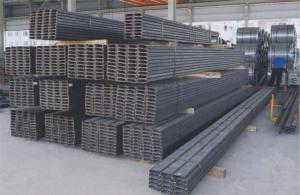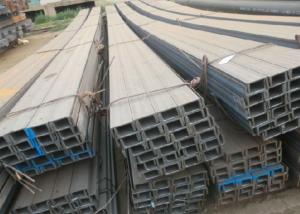Galvanised Strut C Channel AISI,ASTM,BS,DIN,GB,JIS
- Loading Port:
- Guangzhou
- Payment Terms:
- TT OR LC
- Min Order Qty:
- 1000 PCS
- Supply Capability:
- 20000 PCS/month
OKorder Service Pledge
OKorder Financial Service
You Might Also Like
Galvanised C Channel Steel Details
Standard: | AISI,ASTM,BS,DIN,GB,JIS | Dimensions: | 41*21 41*41 41*61 41*82 |
Grade: | Steel.HDG.FRP.ZP,SS304.SS316 | Perforated Or Not: | Is Perforated |
Shape: | C Channel | Application: | construction |
thickness: | 1.5mm 2.0mm,2.5mm 3mm |
Packaging & Delivery
Packaging Detail: | Standard exortation package or as requirement of client |
Delivery Detail: | 10-20 Days |
Galvanised C Channel Steel Performance:
Convenient in construction and save much time and labor
Light and cheap
Length of the product can be manufactured according to customers' requirement
High mechanical strength
Various kinds of fittings can make up of many combinations also for sale
Attractive in appearance
Galvanised C Channel Steel Pictures
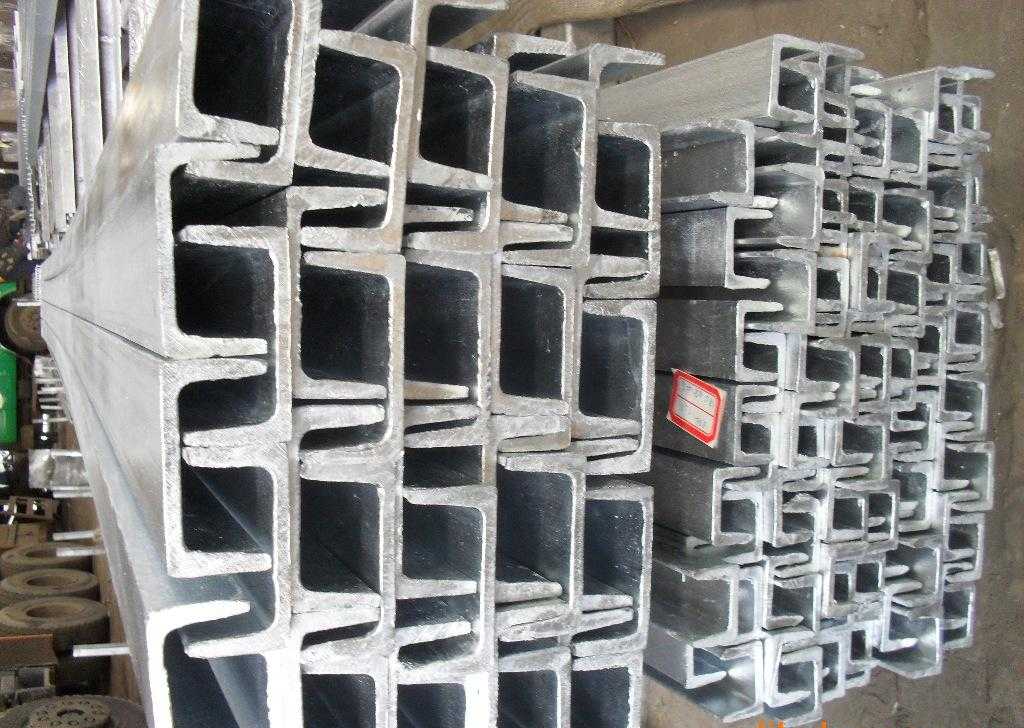
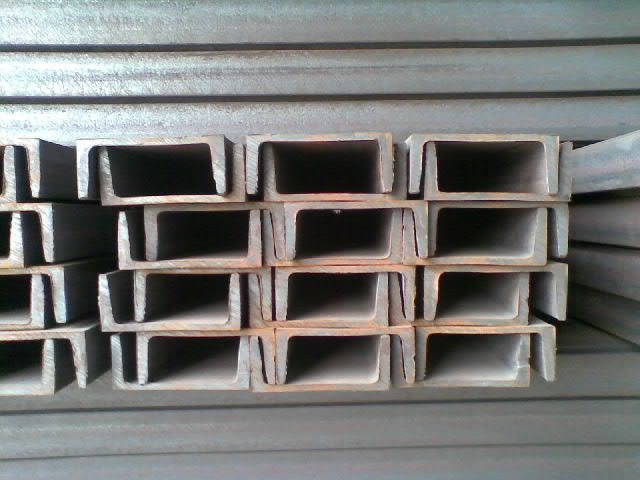
- Q: Are steel channels suitable for the oil and gas manufacturing industry?
- Yes, steel channels are suitable for the oil and gas manufacturing industry. Steel channels provide excellent strength and durability, making them ideal for supporting heavy equipment and structures commonly used in the industry. Additionally, steel channels can withstand harsh environmental conditions, including extreme temperatures and corrosion, making them a reliable choice for oil and gas operations.
- Q: What are the different types of steel channel connections for door frames?
- There are several different types of steel channel connections that are commonly used for door frames. These include: 1. Welded Connections: This is the most common type of connection used for steel channel door frames. In this method, the steel channels are welded together at the corners to form a strong and secure frame. 2. Bolted Connections: Another common type of connection is the use of bolts to connect the steel channels. Holes are drilled in the channels, and bolts are inserted and tightened to hold the frame together. This type of connection allows for easy disassembly and reassembly if needed. 3. Riveted Connections: Rivets can also be used to connect steel channel door frames. This method involves drilling holes in the channels and inserting rivets to hold them together. Riveted connections provide a strong and durable connection. 4. Corner Brackets: In some cases, corner brackets may be used to connect the steel channels. These brackets are typically made of steel and are attached to the corners of the channels using screws or bolts. Corner brackets provide additional stability and strength to the door frame. 5. Adjustable Connections: Some steel channel door frames may have adjustable connections. These connections allow for easy adjustment of the frame during installation to ensure it is level and plumb. Adjustable connections typically use screws or bolts to hold the channels in place and allow for flexibility in positioning. Overall, the choice of steel channel connection for a door frame will depend on factors such as the specific requirements of the project, the desired level of strength and stability, and the ease of installation and maintenance.
- Q: What is the elastic modulus of steel?
- The general definition of the modulus of elasticity is that the stresses in the one-way stress state are divided by the strain in that direction.
- Q: Can steel channels be used for retaining walls?
- Yes, steel channels can be used for retaining walls. Steel channels offer several advantages for retaining walls, including their high strength, durability, and resistance to corrosion. They are capable of withstanding heavy loads and can be easily customized to meet specific design requirements. Additionally, steel channels provide a long-lasting solution for retaining walls and can be used in a variety of applications, such as commercial, industrial, and residential projects. However, it is important to consider factors such as soil conditions, drainage, and engineering requirements when selecting and designing a steel channel retaining wall to ensure its effectiveness and stability.
- Q: Are steel channels suitable for use in the construction of machinery frames?
- The utilization of steel channels is widespread in the construction of machinery frames owing to their remarkable strength, durability, and versatility. These channels not only offer exceptional structural support but also have the ability to endure substantial loads, thus making them ideal for bearing the weight and various constituents of machinery. Moreover, steel channels permit flexibility in design, thereby enabling customization to fulfill specific requirements of the machinery frame. Furthermore, they possess resistance against corrosion and can withstand harsh environmental conditions, guaranteeing steadfast functionality and dependability in the long run. In conclusion, steel channels emerge as a dependable choice for the construction of machinery frames, providing stability, strength, and longevity.
- Q: Q235's steel plate and channel steel were rusted in the rain. The corrosion is not too serious, but it looks obvious. Will this product be rejected? Is there a standard in this respect?Please answer professionals, thank you.
- Steel plate surface defects are allowed to be cleaned and cleaned, but the minimum thickness of the steel plate shall be ensured. Grinding and cleaning should be smooth, without edges and corners. When welding is required, it shall be carried out according to the provisions of GB/T 14977.
- Q: What is the difference between C steel, U steel and channel steel?
- Channel steel: the channel steel is a long strip steel with a cross section. Channel steel is divided into ordinary channel steel and light channel steel. Standard Specification for hot-rolled plain channel steel is 5-40#. According to the channel shape and can be divided into 4 kinds: cold bending equilateral channels, cold-formed non equilateral channel steel, cold rolled edge channels, the cold bending edge channels in accordance with the steel structure theory, should be the steel flange force, that channel should be upright, not lying. Channel steel is mainly used in building structures, vehicle manufacturing and other industrial structures, and channel steel is often used in conjunction with i-beam. See 100 million steel tube for you to answer the content, C steel, U steel and channel of the difference is clear.
- Q: Are steel channels available in different finishes?
- Yes, steel channels are available in different finishes. Steel channels can be finished using various methods such as galvanization, powder coating, painting, or simply leaving them untreated. Galvanization involves applying a layer of zinc to the steel, which provides corrosion resistance and a shiny metallic finish. Powder coating involves applying a dry powder to the steel and then baking it to create a durable and attractive finish. Painting is another common finish where a layer of paint is applied to the steel channels to provide protection and enhance aesthetics. Additionally, steel channels can also be left untreated, which gives them a natural, raw appearance. The availability of different finishes for steel channels allows customers to choose the most suitable option based on their specific requirements in terms of protection, appearance, and functionality.
- Q: Can steel channels be used for aesthetic purposes in architectural designs?
- Certainly, architectural designs can incorporate steel channels for aesthetic purposes. These versatile structural elements can serve both functional and decorative roles in various architectural applications. When it comes to aesthetics, steel channels provide a sleek and modern look that enhances the overall visual appeal of buildings and structures. Their unique shapes and profiles can add depth and dimension to architectural elements, resulting in distinctive and eye-catching designs. Steel channels can be utilized in multiple ways within architectural designs. They can be prominently displayed as exposed structural elements, as seen in bridges or walkways, where their clean lines and geometric shapes create visually striking effects. Additionally, steel channels can be used as decorative features, such as in staircases or railings, to add elegance and sophistication to the space. Moreover, steel channels can be customized to match the desired aesthetic theme of a project by applying a wide range of colors and textures. They can be painted, powder-coated, or left with their natural steel finish, depending on the desired visual effect. Furthermore, steel channels offer durability and strength, making them suitable for various architectural applications. Resistant to corrosion and weathering, they ensure longevity and require minimal maintenance. In conclusion, steel channels are indeed a viable option for enhancing the aesthetics of architectural designs. Their versatility, sleek appearance, and durability make them a popular choice among architects and designers seeking visually appealing and contemporary structures. Whether used as exposed structural elements or decorative features, steel channels can bring sophistication and modernity to any architectural design.
- Q: How do steel channels contribute to building envelope performance?
- Steel channels contribute to building envelope performance in several ways. Firstly, steel channels are often used as framing elements in the construction of building envelopes. These channels provide structural support and help to distribute loads, ensuring the overall stability and integrity of the building. This is particularly important in areas with high wind or seismic activity, where the building envelope needs to be able to withstand external forces. Additionally, steel channels can be used to create a continuous air barrier within the building envelope. By properly sealing and insulating the channels, air leakage can be minimized, reducing energy loss and improving the overall energy efficiency of the building. This is crucial in terms of thermal comfort and reducing heating and cooling costs. Furthermore, steel channels can be used as part of the rainscreen system in building envelopes. Rainscreens are designed to manage moisture and prevent water infiltration, while allowing for proper ventilation. Steel channels can be incorporated into the rainscreen system as support for cladding materials, such as metal panels or glass, creating a protective barrier against the elements. Lastly, steel channels offer design flexibility and versatility. They can be easily customized and installed in various configurations to meet specific design requirements and aesthetic preferences. This allows architects and designers to create visually appealing building envelopes while maintaining performance and durability. Overall, steel channels play a crucial role in enhancing the performance of building envelopes by providing structural support, creating air barriers, managing moisture, improving energy efficiency, and offering design flexibility.
Send your message to us
Galvanised Strut C Channel AISI,ASTM,BS,DIN,GB,JIS
- Loading Port:
- Guangzhou
- Payment Terms:
- TT OR LC
- Min Order Qty:
- 1000 PCS
- Supply Capability:
- 20000 PCS/month
OKorder Service Pledge
OKorder Financial Service
Similar products
Hot products
Hot Searches
Related keywords
